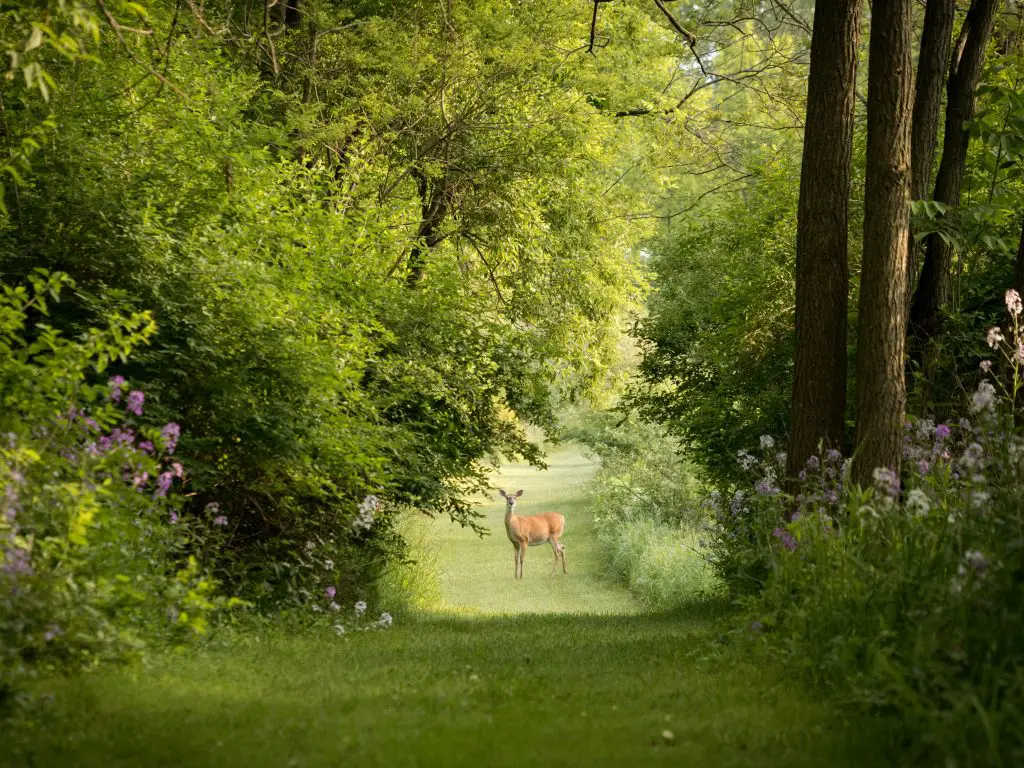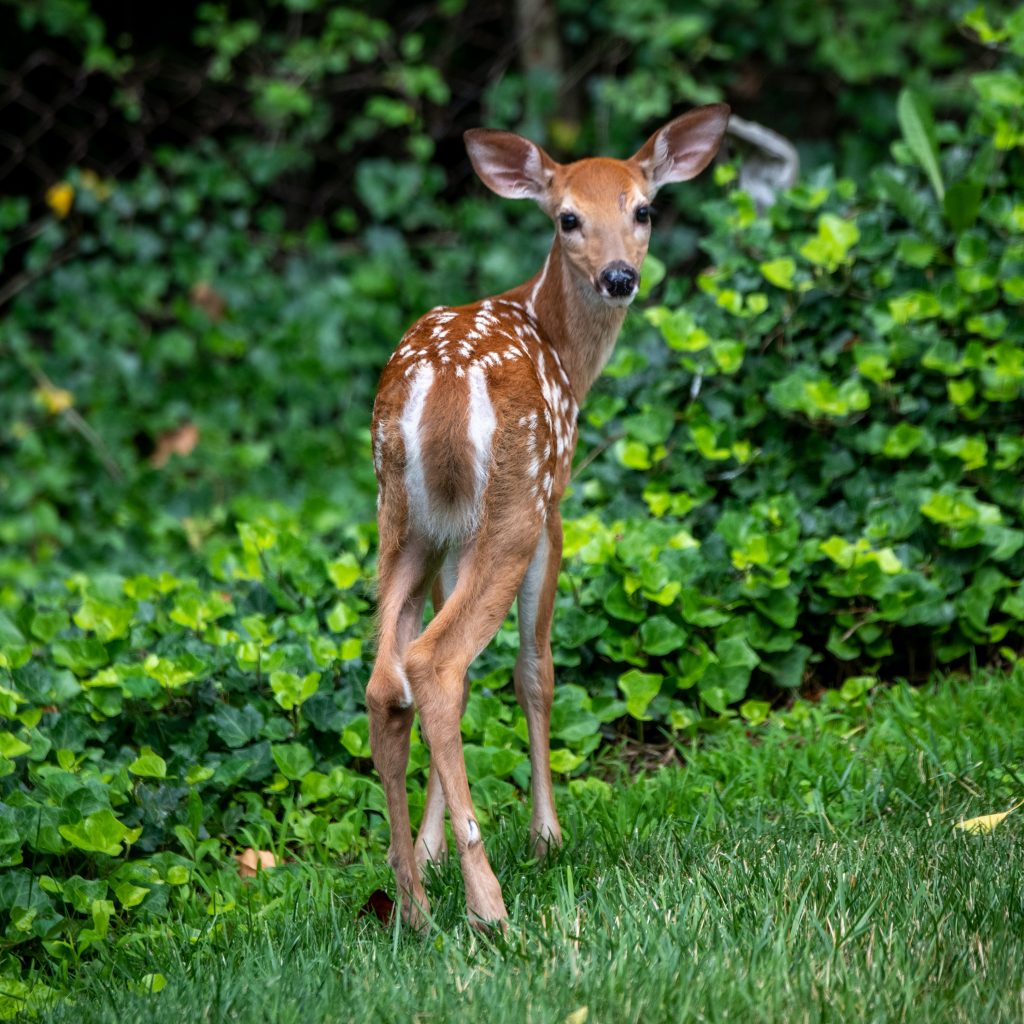Does Deer Repellent Really Work? Deer are a perennial problem in many parts of the United States and Europe where they can literally munch through your entire garden in a matter of nights. To combat this problem there are a huge number of so-called deer repellents that claim to be able to stop the damage. But do any of them really work?
Deer repellents vary in their level of effectiveness depending upon the particular type used. According to several academic studies the most effective repellent is chemical ones that induce fear in the deer encouraging them to vacate the area. However, deer become accustomed to even the most effective repellent systems over time, and therefore it is necessary to vary the repellent used.

What Types Of Deer Repellent Products Are Available?
Deer repellent products can be divided into two major categories chemical deterrents or mechanical and physical deterrent systems.
Chemical Deer Deterrents
Within chemical deterrents there are a couple of different mechanisms used to deter deer which can be classified as follows;
- Fear Inducing Repellents
- Pain in Inducing repellents
- Taste Repellents
Fear-inducing repellents are those chemicals that signal to the deer that they are potentially in danger from a predator which can take several forms. The most common of these is when predator urine is used or even putrid egg solids which have a sulfur smell that mimics the odor of a predator.
In those circumstances, the deer may leave an area sprayed with this substance to avoid a potential ambush by a predator. A few of the commercial produces that employ this technique include Bobbex, Deer-Away, and Plantskydd. However, there are also several commercial repellents that combined more than one technique to create their repellent. To get a list of the ingredients of a range of commercially available repellents click here.
Pain-inducing repellents contain chemicals that cause immediate pain or discomfort to the animal as soon as they consume the leaves of the plant. These repellents typically contain chemicals such as ammonia, peppermint, or capsaicin which is the ingredient that creates the heat in chilis. Commercial products such as deer-off use these types of techniques.
Taste-based repellents contain chemicals that make the leaves of the foliage unpalatable to the deer. The vast majority of commercial products use this mechanism combined with other ones to reduce the attractiveness of plants to deer.

Physical And Mechanical Deer Deterrents
There are many types of physical and mechanical deterrents which are sold commercially. With the vast majority of them being motion activated in some way. Examples of this include motion-activated sprinkler systems, ultrasonic systems, and lighting systems which include predator’s eyes.
These types of systems respond to movements within a specific area and are designed to encourage the deer to leave the area.
Which Of These Deterrence Systems Are The Most Effective?
The majority of deer repellent studies carried out within academia have focused on the use of chemical-based repellants. When looking at these studies there is a consistent theme that those repellents based on the mechanism of fear are the most effective for the longest period. One example of this is a 2010 study published in the Human-wildlife interactions journal.
However, no repellent is 100% effective over an extended period with most products waning ineffectiveness over time. A bulletin published by the United States Department Of Agricultural Forestry Services compared a range of commercial repellents and found that even the best repellents reduced in effectiveness after a period of approximately 12 weeks.
The most effective method to deter deer is to use more than one fear-based deer repellent through the season. However, for this to be fully effective, it is important to ensure that the chemical basis of the repellents used is actually different rather than the same chemical by a different name.
To avoid this issue the 4 most effective deer repellents in the study, their ingredients, and the weeks that they are effective are provided in the table. The products are placed in order of the degree of effectiveness to make it easy to select products. To see the latest prices on Amazon for each individual product click on the links within the table.
| Product | Active Ingredient | Weeks Effective |
| Deer Away Big Game Repellent Powder | 36% Putrescent whole egg solids | 11 weeks |
| Deerbuster’s Coyote Urine Sachet | 50% coyote urine | 11 Weeks |
| Bye deer | 85% sodium salts of mixed fatty acid | 13 Weeks |
| Plantskydd | 87% edible animal protein | 11 Weeks |
Of these products Deer away was the most effective during the 11 week suppression period with zero deer feeding activity observed. Deerbusters was slightly behind with a very small amount of activity detected. Both plantsskydd and bye deer clearly suppressed the level of feeding substantially however during the suppression period there was a consistent amount of low level of feeding occurring that was higher than the top two performing products.

What Do We Recommend That You Use?
Given that all the deer repellents tested have an effective suppression period before the deer become accustomed to the repellent the only effective strategy is to rotate the use of different repellents at different stages through the year. This will mean applying a new repellent every 2 to 3 months to keep the deer at bay.
However, given that deer away is the most effective during it’s suppression period we would suggest that that would be best to apply this during the most critical time of the year for your particular garden.
This critical time will vary depending upon the type of garden you have and the things that you’re growing in your garden. However, for most flowering plants this will be when plants are on bud as no buds means no flowers, and in the case of fruit trees no fruit for the year.
Mechanical Systems
In terms of mechanical systems there is not the same degree of academic research that has been carried out on these types of systems however there has been some research done that suggests that these systems are not nearly as effective as chemical repellents.
One example of this was the study carried out by the Univerity of Nebraska which looked at the effectiveness of three different systems over an 8 week period in 4 different sites. The study concluded that these types of devices were generally ineffective in deterring deer from eating corn crops nearby.

As there was a limited effect on the feeding the researchers during the trial also adjusted the systems to include things like strobe lights in an attempt to start all the animals. This adjustment had little difference on the trials outcome.
This suggests that deer generally become accustomed to the systems within a matter of a week or two irrespective of the mechanism that is used to frighten them. This means for these systems to be effective there would have to be a constant rotation of methods used to effectively repel the deer from your property.
At this point, it is important to know that one of the most common method used to repel deer is ultrasonic sounds. I have looked at several different academic studies which have tested these systems and all studies without exception have found that ultrasonic systems have little to no benefit in terms of warding off deer, rodents or anything else for that matter. So if you were going to invest in a system of this nature as part of your defense strategy do not spend your money on an ultrasound system because I simply does not work.
I hope you found this article useful and you’re able to find a successful strategy to stop dear eating your plants. Good luck,
Relevant Articles
How High Can A Deer Jump? (And What Type Of Fence Do I Need To Build To Keep Them Out)
Are Raspberries Deer Resistant? (And How To Protect Them)
Are Cosmos Deer Resistant? And How To Protect The Plants.
Is Lavender Deer Resistant? Can You Use Them To Protect Your Garden
